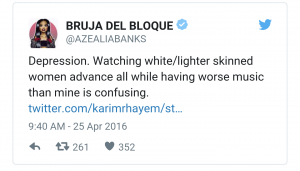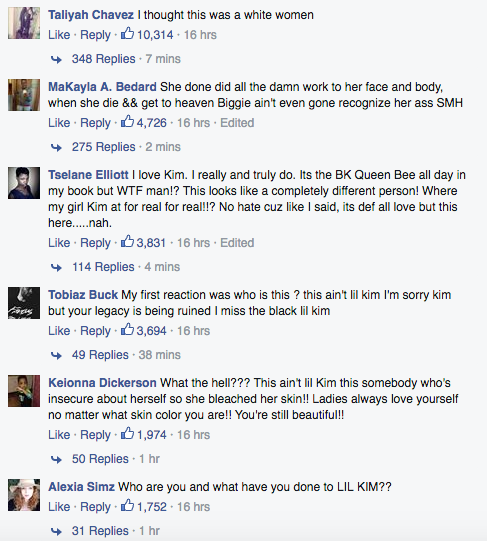Azealia Banks Admitted Why She Bleaches Her Skin

By:
Even two months after her Twitter account was deleted, Azealia Banks tweets are still inspiring discussion.
This time, the conversation surrounds some comments the Harlem rapper made about skin lightening back in April. The tweets resurfaced after she touched on skin bleaching again in a Facebook post on Tuesday.
Here's some background.
Banks initially spoke out when a Twitter user asked her reasons for lightening her skin.
Banks' answer was sad, but also revealed a big problem with the beauty standards in the U.S. She said that she saw white and light skinned black women have more success even though their music was "worse" than hers. Her conclusion was that society found them to be prettier.
 Twitter/Azealiabanks
Twitter/Azealiabanks
While people are free to evaluate Banks' music according to their own taste, her assertion about society's preference for white and light-skinned artists is grounded in reality.
The rapper is referring to "colorism." The Oxford dictionaries defines colorism as a "chiefly U.S." phenomenon defined as "prejudice or discrimination against individuals with a dark skin tone, typically among people of the same ethnic or racial group."
Colorism is most obvious in American beauty standards that tend to favor Black people with lighter skin tones. Many of the Black actors and music artist who are considered to be attractive have lighter skin. A Google image search for "beautiful African American celebrities" brings up mostly lighter or medium toned Black people.
 Googe Image Search - google.com
Googe Image Search - google.com
People on Twitter often discuss colorism in Hollywood, pointing out that Black voices in the media are primarily from lighter toned people.
Lil' Kim also caused a social media controversy back in April when she posted a picture of herself on Facebook looking drastically different.
 Facebook/Lil Kim - facebook.com
Facebook/Lil Kim - facebook.com
Facebook commenters said she looked like she bleached her skin to appear white.
 Facebook/Lil Kim - facebook.com
Facebook/Lil Kim - facebook.com
Colorism isn't a new phenomenon. It's rooted in a racist caste system developed by slavery and colonialism.
In her study of the history of colorism, Margaret Hunter from the Department of Sociology at Mills College called it a "persistent problem" in America.
"Colorism for Latinos and African Americans has its roots in European colonialism and slavery in the Americas. Both systems operated as forms of white domination that rewarded those who emulated whiteness culturally, ideologically, economically, and even aesthetically. Light-skinned people received privileges and resources that were otherwise unattainable to their darker-skinned counterparts."
